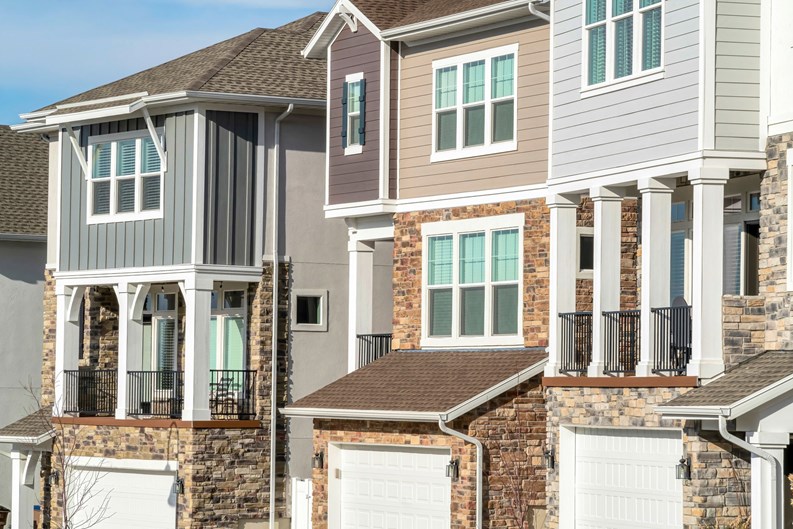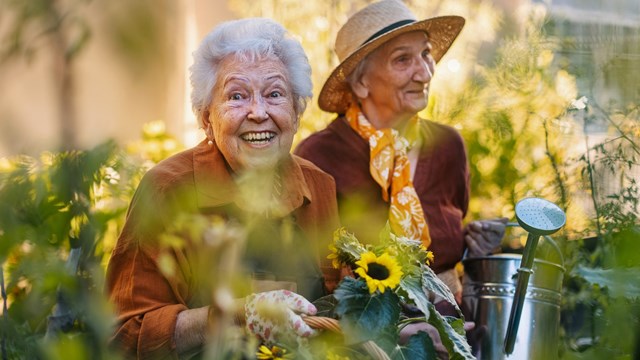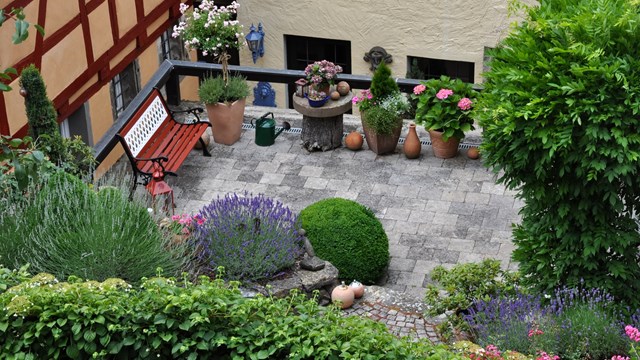Outdoor space, whether communal or private to individual units, has always been at the top of the most-desired amenities list for condominium and co-op purchasers. A small terrace or balcony can add hours of quiet enjoyment to apartment living—not to mention thousands of dollars to the value of a given unit. Recent sales data suggest that apartments with private exterior space and buildings with common areas enabling residents to enjoy safe outdoor access during the COVID-19 pandemic are selling more quickly and at higher prices than comparable units without those features. In many markets, single-family homes are selling at record speed—and for record prices. Even homes with in-ground pools—often considered ‘white elephants’ in the Before Times, thanks to the maintenance and upkeep they require—are selling at a huge premium.
CooperatorNews spoke to one suburban Stamford, Connecticut couple who prefer to remain anonymous about their selling experience. They report that just a few years ago, their four-bedroom mid-1970s home with an in-ground pool and jacuzzi was ‘unsellable’ at a price acceptable to them. Fast-forward to last November, when it sold—for more than their asking price and with multiple bids—in one weekend.
Becoming Competitive
Condominium and cooperative communities have a lot to consider when it comes to translating exterior amenities into a competitive sales advantage. Buildings that weren’t built with individual terraces and balconies generally can’t overhaul their fundamental structure to add those elements, nice as that would be. There are of course other options available to provide a safe, monitored, exterior space for residents to access in good weather, but they vary depending on building type; obviously, high-rise buildings have different options than more horizontal communities. As always, though, necessity is the mother of invention, and boards and communities must be inventive if they want to build out, enhance, or upgrade their outside spaces.
Alan Gaynor is an architect and a principal of Boddewyn Gaynor Architects, a firm based in New York that works all up and down the East Coast, including several projects in New Jersey. “Outdoor space has become very important since the beginning of the pandemic,” says Gaynor. “Buyers are increasingly looking for it—to the point that anyone designing a building today who is not including outdoor space is crazy, because it will affect salability. When I originally bought my apartment, I wanted outdoor space, but couldn’t afford it. Now it’s more important than ever. If you can’t have private outdoor space such as a terrace or balcony, outdoor community space is nice to have. We now have a roof garden on our building. Truthfully, it’s not much of a garden, but it’s there and really valuable now.”
Gaynor points out that there are many possible places for a co-op or condominium community to carve out outdoor space. First and foremost, there’s the roof. While an expensive and sometimes technically difficult undertaking, roof decks provide residents with what might be the best option in denser, more urban areas where ground-level space is sometimes just nonexistent. There’s also likely to be more direct sunlight for longer periods of the day on a rooftop than in a courtyard or alley at ground level, and it’s likely to be a larger space that can accommodate more people at once, especially when factoring in the social distancing guidance that is likely to be with us for some time.
Another option for some properties is to use or repurpose courtyards, alleys, and unused or underused backyards. This may not be feasible with all such spaces, but for many it is, if it’s well considered and well executed. “Greenery is always appreciated by everyone,” says Gaynor. “A garden or courtyard or patio, whatever you want to call it, must have an amalgam of both greenery and paved spaces. There should be space for benches and tables. The ability to eat one’s lunch outside, weather permitting, is a great thing. If the space you are considering using is on the ground floor, you can dig up the earth under the concrete now covering it to create plant beds. If you can’t, there are potted plants—which are what’s typically used on roof decks today—though those require more intensive care. You may even have more than one area—and those can be designated for different uses or segments of the community. Perhaps one area is for families with children, while another could be designated as a quiet area.”
Horizontal communities like townhouses, garden-style apartments, and even single-family-home HOAs can increase their curb appeal by repurposing exterior areas as well. They can add paved walking paths for exclusive resident use, or even repurpose a parking lot into a playground (assuming they have sufficient parking otherwise, or can create replacement parking elsewhere on the property—which, Gaynor points out, can be a very expensive proposition, but one that adds to value and quality of life).
Denise Becker, a regional manager with Corner Property Management in Springfield, New Jersey, mentions an over-55 property where the residents are considering converting a tennis court to an outdoor seating area. While residents would use the courts normally, various local ordinances governing use during the pandemic, plus concern about potential COVID-related liability claims (Ed note: prior to New Jersey’s recent passage of a law that limits lawsuits against planned real estate developments stemming from COVID-19 exposure in common areas), made the community reluctant to continue using the space for tennis. Converting the already paved space into a seating area made sense for them—it keeps the space in use while still enabling users to take proper precautions.
Now, or Later?
The simple truth is that while adding additional exterior spaces for community use may be a growing priority for urban properties, that urgency or interest may not be quite the same for suburban communities. Becker points out that the market for all types of dwellings—condos, co-ops, and single-family homes—is very strong across most markets. Listings don’t remain unsold for very long. The movement of people from urban environments to suburban ones as a response to COVID-19 has been well documented—and has influenced many suburban communities to put plans for reuse or repurposing on hold, since they simply don’t view those types of projects as necessary to increase or maintain their market position.
Another consideration, Becker explains, is that boards are being financially prudent. Many buildings and associations are experiencing (or concerned about experiencing) a shortfall in income due to residents losing parts or all of their income during the pandemic. Simply stated, they don’t want to obligate themselves to new capital projects—even relatively modest ones—until the economic picture has stabilized.
An Opportunity
Kevin Dulio is president of Native Fields Landscaping, located in Jefferson Township, New Jersey. His clientele consists mostly of large HOAs. In contrast to Becker’s report, Dulio says he has seen an increase in inquiries from the communities he works with for additional exterior amenities—everything from dog parks to walking paths and community gardens. That said, he confirms Becker’s observation that communities are behaving very conservatively about spending money right now. “They’re interested in creating new outdoor spaces and amenities for their communities, but they’re also concerned about undertaking new projects at this time,” he says. “They are asking questions, doing their due diligence.” Dulio says he expects that as the economy stabilizes and improves, communities will be moving toward increasing exterior community spaces in the future.
The effects of COVID-19 have been and will continue to be many and myriad as well as unexpected. Boards of directors of condominiums, co-ops, and HOAs must be vigilant to keep ahead of trends within their market—to keep their properties competitive with new buildings and communities constructed after the arrival of the pandemic, and to keep in mind the needs of residents in a post-pandemic world. Options are many. They may include the reuse or repurposing of underused or unused parts of their property to better serve their residents. What was once a place to store trash before collection may now become a beautiful Zen garden, where residents can find respite from the stress of the world around them.
A J Sidransky is a staff writer/reporter for CooperatorNews, and a published novelist.










Leave a Comment